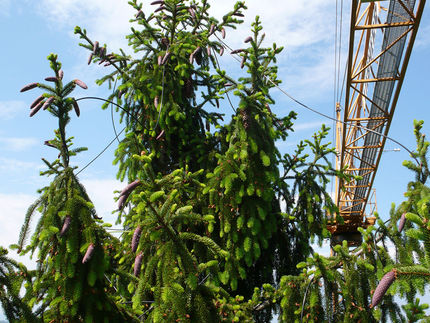Research on how plants transport sugars could be of critical importance in era of global warming
Advertisement
How do many plants ship sugars from their leaves to flowers, roots, fruits and other parts of their structure? Using genetic engineering techniques, Cornell researchers have finally proven a long-standing theory of how this occurs. The findings not only deepen understanding of basic plant biology but could one day allow researchers to genetically engineer plants with increased photosynthetic rates, yields and carbon dioxide intake. This might be critically important in an era of climate change.
The theory of transporting sugar, the polymer trap model, was first proposed in 1991 by Robert Turgeon, Cornell professor of plant biology. He is also the senior author of the latest research published in Proceedings of the National Academies of Science. Ashlee McCaskill, Ph.D. '07, who worked in Turgeon's lab, is the paper's lead author.
Turgeon's theory suggested that as sucrose, a form of sugar, accumulates in leaves as a product of photosynthesis, it diffuses into the plant's tubelike transport tissue, called phloem, along with other nutrients to move to other areas of the plant. Once in the phloem, small molecules of sucrose polymerize, or combine, to form larger, more complex sugars, which become too large to flow back into the leaf. The polymerized sugars are then forced to move away from the leaf to parts of the plant where they may be used or stored.
To prove the theory, Turgeon and McCaskill genetically engineered a plant closely related to a member of the figwort family, purple mullein (Verbascum phoeneceum L.), so that two genes involved with polymerizing sucrose into larger molecules were silenced. When they did so, sugars backed up in the leaves.
In normal plants, when sugars (made from water and carbon dioxide during photosynthesis) accumulate in the leaves, photosynthesis slows down, and the plant does not take in as much carbon dioxide from the air. Likewise, when the sugars move out of the leaves, the rate of photosynthesis and carbon intake increases, McCaskill said.
"If we could increase the plant's phloem-loading rate, the potential would be to increase photosynthetic rate and yield, but that is theoretical right now," said McCaskill. A 2006 article in the journal Science, McCaskill said, showed that when atmospheric carbon dioxide increases, plants do not take in the excess due to a series of feedback loops that constrain the plant.
"Phloem loading is one of these feedbacks that have an effect on the ability of plants to intake carbon dioxide at the highest level," said McCaskill. Carbon dioxide, which is increasing in the Earth's atmosphere, is the major greenhouse gas that traps heat and warms the planet, McCaskill noted.






















































